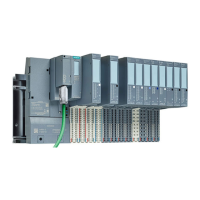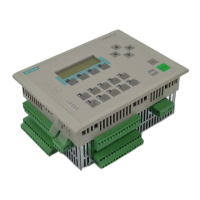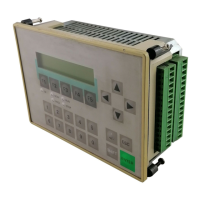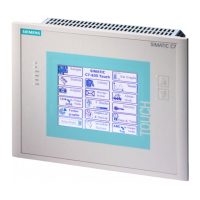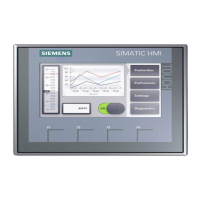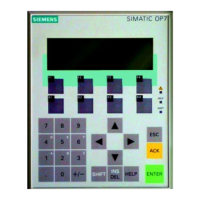
Do you have a question about the Siemens SIMATIC OP7 and is the answer not in the manual?
| Resolution | 320 x 240 pixels |
|---|---|
| Power Supply | 24 V DC |
| Relative Humidity | 5 to 95% (non-condensing) |
| Mounting | Panel mounting |
| Display | LCD |
| Keypad | Function keys and numeric keypad |
| Communication Interfaces | RS485, RS232 |
| Operating Temperature | 0 to 50 °C |
| Storage Temperature | -20 to 60 °C |
| Protection Class | IP65 |
Provides a description of the OP7 system's components and capabilities.
Details the specific functions of the OP7 control panel keys like F1, K1, K2, K3, K4, and SHIFT.
Defines key terms and concepts related to the OP7 system and its operations.
Outlines the procedure for turning the machine on and initial system checks.
Explains how to configure software alarms for temperature and humidity to protect the product.
Illustrates the operational flow and navigation between different functions of the OP7 system.
Guides on setting temperature and humidity values in manual operation mode.
Details how to set temperature and humidity slopes with specific gradients.
Presents an example of a temperature and humidity control cycle with graphical representation.
Provides a detailed table outlining parameters for an example temperature and humidity cycle.
Explains the process of programming cycles, including editing, saving, and loading.
Describes how to set up loop repetitions for parts of a program.
Details the importance and procedure for saving programmed cycles to the main memory.
Explains how to load and execute previously saved programmes.
Provides instructions on how to remove programmes from the MICRO PLC memory.
Guides on setting up automatic repetitions for entire programmes or specific segments.
Enables checking segments of a loaded programme without modification.
Allows visualization of the chamber's state during cycle execution.
Explains how to view readings from user-defined analog inputs.
Details how to visualize temperature measurements from user PT100 probes.
Covers the configuration of user analog inputs from 1 to 6 for various devices.


